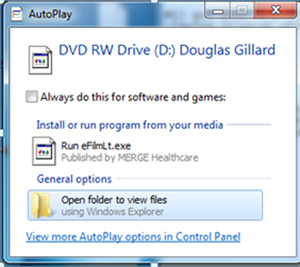In order to get the most out of your consultation with me, it is always best that I have a copy of your latest MRI/CAT scan disk--although we can certainly proceed without any scans and just use a radiologist's report or no report at all if you so desire. Probably, 85% of the patients I consult with, present me with a copy of their latest MRI/CAT scan disk.
Why do I want to see your images? Because I've found over the years that some radiologists get a little lazy and don't write everything down that is pertinent (like HIZ signs, annular tear indications, small this protrusions, retrolistheses etc). These little details can sometimes very important pieces of the puzzle of pain. So, it's best that I get to see just what is going on with the discs and facets. *note: I do not read these MRI for pathology like Cancer and vascular problems etc--I'll leave that important function to the trained radiologist.
The following tutorial is a very basic description of how you can get me a copy of your MRI disk without using the postal service (a.k.a., snail mail). In a nutshell, all you are doing is compressing all of the files on your disk and then uploading them to a server (my tutorial will use SendThisFile, but really you can use any server you like like Rapidshare or MediaFire).
Once your MRI is uploaded, you can e-mail me your user name and password, and then I can go and retrieve the images. Or, if you choose to use the pay account, the service will provide you with a link that you can e-mail me, so I can then download your disk for my review--this way you don't have to give me your password.
So here is a rough tutorial of how to use a server called SendThisFile. It can be reached and investigated at this web address: www.sendthisfile.com (by the way, I have absolutely no financial interest or any involvment in this server company – is just happens to be one that I have used for some time. Although the free account has its flaws (sometimes it gets so busy, your upload times out and you have to start over later in the day when it is less busy), it seems to be quite secure and works pretty good, so let's get started with the tutorial: |









